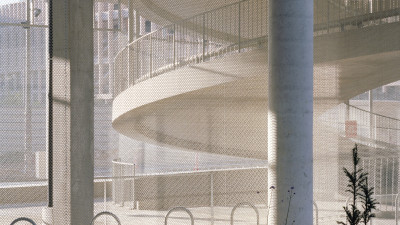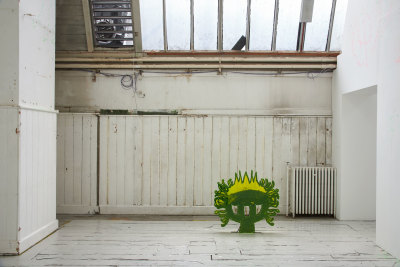The month in architecture
The month in architecture
Everything you need to know that happened in December
By Helena Cuss
Published 1 January 2016
The top five architecture news stories, the most exciting new projects and the latest prizes – rounded up into one handy post each month.
-
Assemble win the Turner prize
Architecture and design collective Assemble have become the first non-artists to win the Turner Prize, British art’s most prestigious award. The team of 18 were nominated for their Granby Four Streets project in Liverpool, in which they worked with residents on the dilapidated housing estate to clean up the neighbourhood, paint empty houses and initiate a local market. They also planted and created social outdoor spaces and offered building jobs and training to local people, and their win marks a significant step away from the usually elitist art market to an appreciation of socially-minded design. The Turner Prize’s £25,000 is awarded annually to a British artist or group under the age of 50.See the runners up on the Tate website.
-

Granby Four House, Greenhouse View, Assemble RA
-
Eric Parry Architects unveils next “tallest” tower for City of London
Eric Parry Architects released designs for 1 Undershaft, a 73-storey tower which will slot into the increasingly crowded cluster of skyscrapers in London’s financial district, neighbouring the Cheesegrater and the Gherkin amongst others. It will be the second highest building in the capital after the Shard, and will feature a free public viewing gallery at the top, which will be open seven days a week. Already nicknamed the “Trellis” by some for its design criss-crossing bracing, the shape of the Undershaft itself is an understated and simple rectangular cuboid, which may come as a relief to many Londoners growing weary with “wacky” shaped towers popping up in their city.See interactive features about the skyscrapers on the Guardian.
-

Dbox Tower, aerial cluster
-
NBBJ design floating ice rinks for the Thames
Back in September we reported NBBJ’s speculative scheme for a “walking” Tube line, with pedestrians sped along by travellators – now the architecture firm are back with something even more spectacular, with their idea for Frost Flowers: floating ice rinks on the River Thames, which live below the water’s surface during the summer, and rise up and unfold like blossoming flowers in the winter months. The retractable jetties would collect water from the river which then be frozen on the surface, creating an ice rink. The concept was inspired by London’s historic frost fairs, held in the 17th, 18th and 19th centuries when the Thames froze over, sometimes for months at a time. The river would be transformed into a festival site, with food stalls, fairgrounds and sporting events believed to have taken place.Find out more about NBBJ’s ideas for London on their website.
-

Frost Fair
-
Campaign to keep the Cass open takes a turn for the worse
The London Metropolitan University’s decision to shut down the Aldgate site of the Cass Faculty of Art, Architecture and Design, one of the country’s best loved architecture schools, looks set to go ahead, despite a long and hard-fought campaign by students, staff, prominent architects such as Richard Rogers and David Chipperfield, and now the House of Lords. Ministers have refused to intervene, despite arguments from Lib Dem and Labour peers that the move would damage not only the prestige of the school as a centre of British art design and manufacture, but would also leave a void in the neighbourhood’s physical heritage, which is being increasingly taken over by characterless skyscrapers. The Met’s new policy of “one campus, one community” would necessitate the Faculty moving to Holloway, leaving behind the closely-forged ties with local industries and craftsman, which the school has been building since its move to Whitechapel in 1965. Early this month students staged a sit it at the Cass’s Bank Gallery to stop of the sale of their building, shortly after the well-respected Robert Mull was suspended from his position as Dean.Read more about the decision from the London Metropolitan Police Service.
-
Gargoyle encrusted tower proposed in New York
New York architect Mark Foster Gage has revealed designs for a skyscraper in Manhattan, his response, he says, to a city full of skyscrapers “virtually free of architectural design”. The design is highly decorative, drawing on the ornate Gothic style, with four huge cantilevered balconies supported by dramatic concrete carved wings, and sculptural elements resembling the fronts of cars and propellers, and gargoyles, which Gage has proposed could be made by robotic technology. The building will be 102-storeys high, with views over Central Park, a double height ballroom and a luxury restaurant. Presumably members of the Stand Against Shadows campaign, reported in this blog last month, will have a thing or two to say about yet another supertall tower being erected over the city’s main green space.Explore the building in a video on Mark Foster Gage Architects’ website.
-

Mark Foster Gage, robotic stone carving research at Yale







